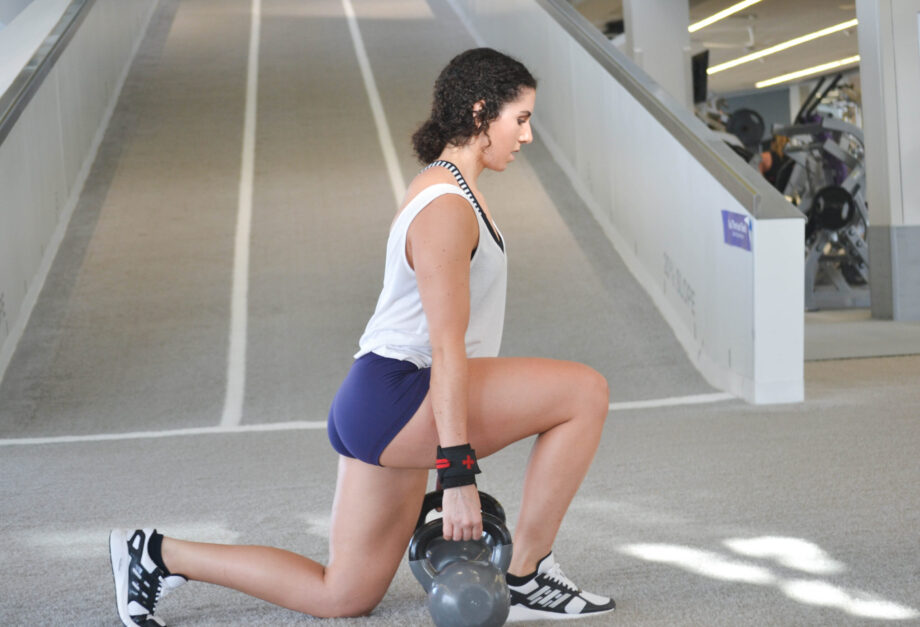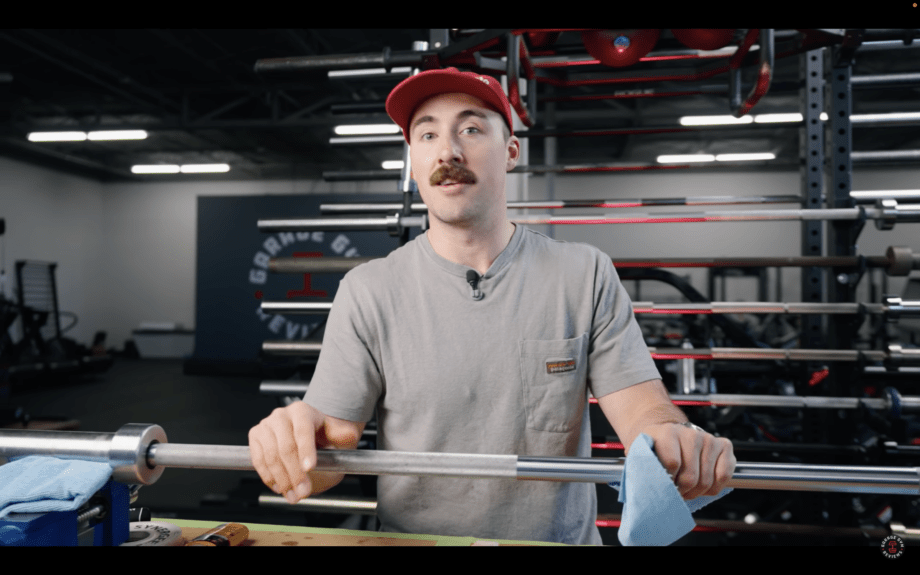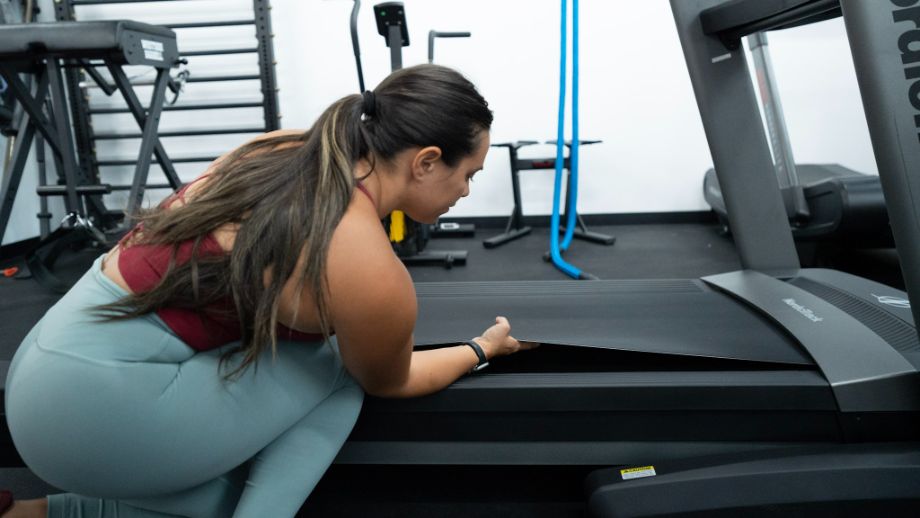The kettlebell is a great tool to improve your strength and conditioning. It is unique because of its thick handle and offset center of mass, which is about 6 to 8 inches from the handle. This design impacts your stability because your body is constantly adjusting due to the offset center of mass.
Do you know what makes training with the kettlebell even more challenging for improved results? Performing two or more kettlebell exercises back to back in one seamless movement, otherwise known as a kettlebell flow. These kettlebell workouts challenge your body with extra time under tension to improve coordination, grip strength, and cardiovascular capacity.
The ballistic nature of the kettlebell exercises in a flow will have your heart scrambling to push blood to your working muscles. Here we’ll dive into the best kettlebell exercises so that you can use this fantastic training method for added variety and to drive results.
Ready to go with the flow? Then let’s go.
What Is a Kettlebell Flow?
Kettlebell flows are when you combine two or more exercises to create one seamless movement, like a unilateral kettlebell clean to an overhead press. You complete all the exercises of the flow without putting the kettlebell down.
There are some things to pay attention to when designing or performing your kettlebell flow. When combining two or more exercises into a kettlebell flow, your weakest movement will be the weight you’ll do for the flow. If you can clean 53 pounds but press 35, you’ll use 35 pounds for the kettlebell clean.
The second is the emphasis on the flow. The exercises need to flow from one to the other in a logical sequence. A kettlebell swing to an overhead squat doesn’t flow, but a unilateral kettlebell swing to an offset front squat does.
RELATED: Best Kettlebells
5 Kettlebell Flow Benefits
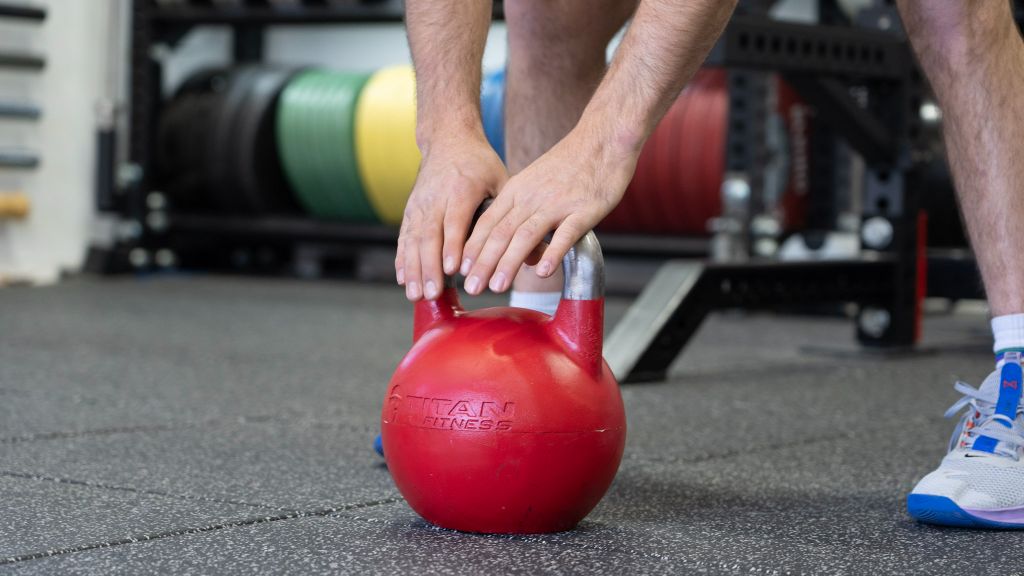
Kettlebell flows are taxing because you’re putting extra time under tension on the body by performing strength and power exercises. There’s got to be benefits for kicking your butt, right? And here they are.
Increased Calorie Burn
For every liter of oxygen you breathe in, you burn 5 calories. When performing multiple reps of the kettlebell flow, you’ll breathe in a lot of air, increasing your calorie burn.
Grip Strength
It’s well-known that one of the benefits of using kettlebells is increasing grip strength. Holding the kettlebell handle for an extended time when performing the flow will improve your grip strength and endurance by default. Plus, you’ll get a forearm pump like never before.
Better Coordination
“Coordinated” means to be unified. When you say someone is coordinated, you mean they can get their muscles and body to sync. Performing two or more kettlebell exercises in a flow can improve your coordination.
Full-Body Workout In Less Time
When time is of the essence, and you want to get in full-body training, designing a kettlebell flow that involves the lower and upper body will train the body from head to toe in no time.
Improved Cardiovascular Conditioning
If you’re the type of person who gets bored quickly with traditional cardio, then kettlebell flows are for you. The combination of power and strength of the kettlebell exercises into one seamless movement and training the upper and lower body will do wonders for your total-body conditioning.
Beginner Full-Body Kettlebell Flow
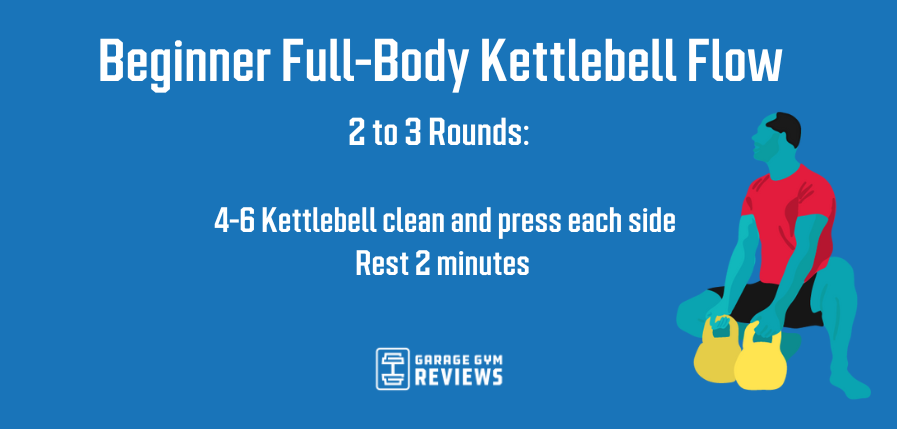
2 to 3 Sets:
4-6 Kettlebell clean and press each side
Rest 2 minutes
Note: Here, we assume you know how to perform all the moves required in the flow; you need help figuring out how to put them together. And please, perform a warm-up before attempting these flows.
When you are new to flows, covering the basics of the clean squat and press into one movement is an excellent place to start, as it trains your entire body within this kettlebell flow.
How to do it:
- Address the kettlebell on the floor and set up to perform a unilateral KB clean
- Perform a clean and set the KB in the rack position.
- Unlock the knees and then fully extend the legs.
- When you’re almost up, perform an overhead press till lockout.
- Reverse and swing the KB between the legs to start the flow repetitions again.
Sets & rep scheme and rest suggestions: Two to three sets of four to six reps with two minutes rest after doing both sides’ work.
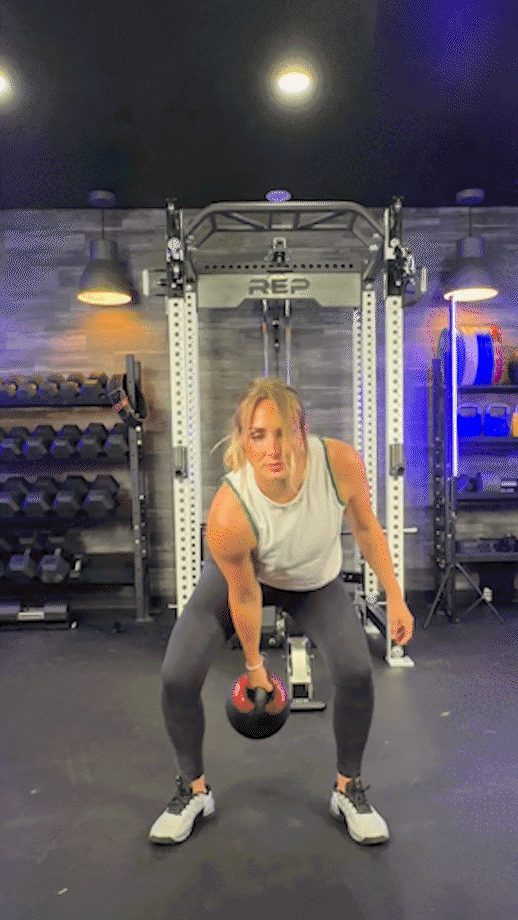
Fat Loss Kettlebell Flow
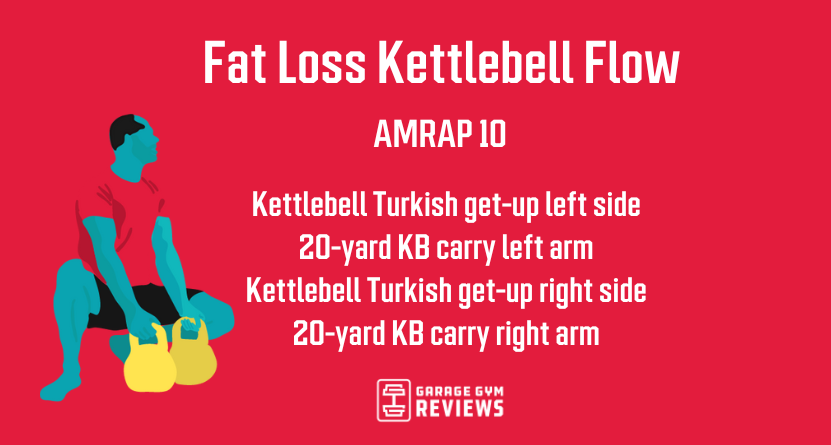
AMRAP 10:
Kettlebell Turkish get-up left side
20-yard KB carry left arm
Kettlebell Turkish get-up right side
20-yard KB carry right arm
Performing the Turkish get-up and an overhead carry flow will put incredible tension on your cardiovascular system. Getting up and down from the ground is a great driver of fat loss.
How to do it:
- Perform a Turkish get-up on your left-hand side.
- Once you have the kettlebell overhead, walk for 20 yards, there and back.
- Reverse the get-up until you are back on the ground.
- Swap to the right hand and repeat.
- Keep alternating sides for 10 minutes.
Sets & rep scheme and rest suggestions: Here, you’ll do one rep of the get-up and carry on both sides. Rather than count reps, do for ten continuous minutes, resting when needed.
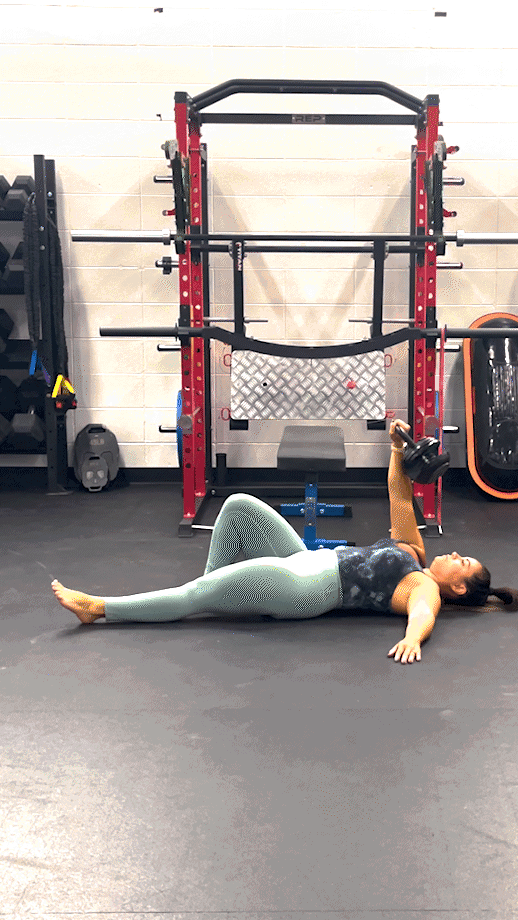
HIIT Kettlebell Flow

30 seconds on, 30 seconds off:
4 KB swings
4 KB goblet squats
4 KB reverse lunges
This HIIT workout combines power and grinding lower-body exercises into one movement, frying your glutes and other lower-body muscle groups and driving your heart rate sky-high.
How to do it:
- Address one kettlebell on the ground to prepare to do the two-handed handed KB swing and perform 4 swings.
- Get the kettlebell in the goblet position on the fourth swing and perform 4 goblet squats.
- While in the goblet position, perform 2 reverse lunges on each leg.
- That’s one rep. Go back to the swings and repeat.
Sets & rep scheme and rest suggestions: Performing this flow 30 seconds of work, 30 seconds of rest, or 40 and 20 will give you all you can handle.
Conditioning Kettlebell Flow
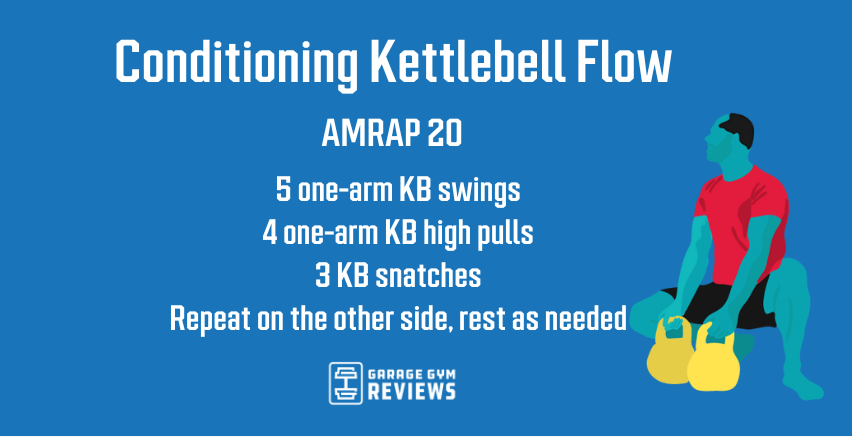
AMRAP 20
5 one-arm KB swings
4 one-arm KB high pulls
3 KB snatches
Repeat on the other side
All three flows above will improve your conditioning, but this unilateral, single kettlebell flow puts 3 power exercises back to back to back to challenge your grip strength and cardio.
How to do it:
- Address the kettlebell for the one-arm swing and perform 5 swings.
- After the 5th swing, go right into the high pull for 4 reps instead of performing a swing.
- When you’re finished with high pull, hike the KB between your legs and go straight into performing 3 snatches.
- After you have completed one side, repeat this sequence on the other side.
Sets & rep scheme and rest suggestions: Perform this on your cardio day for 10-20 minutes, alternating sides and resting when needed.
Who Should Do Kettlebell Flows?
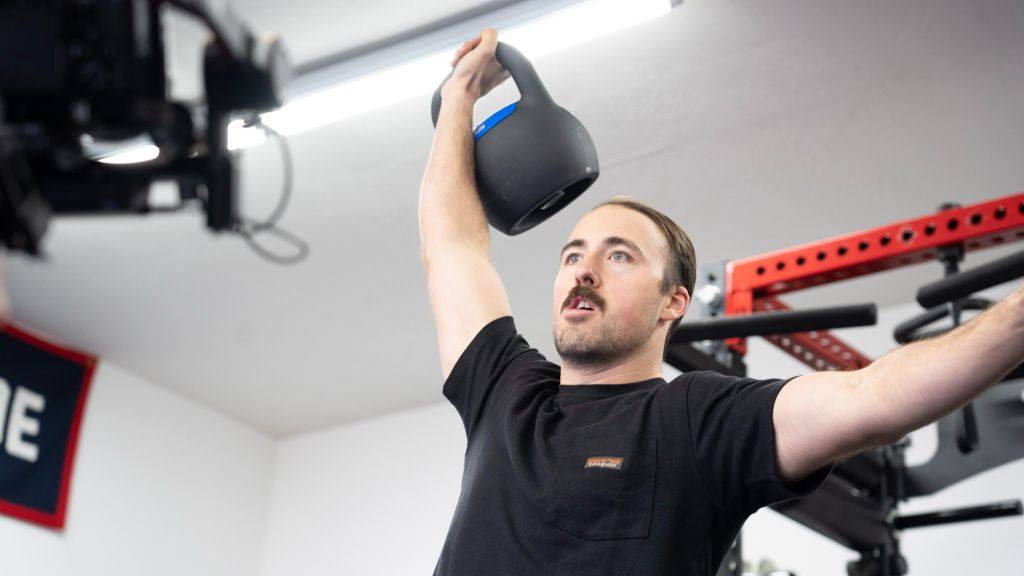
You are good to go if you got the basics of the kettlebell swing, snatch, squat, and Turkish get-ups down. If you have yet to master the kettlebell basics, spend time there before going with the flow.
Everyday Gym Goer
Whether you lift for fun, to get stronger, or to improve your performance, kettlebell flows will mimic your activities of daily living of hinging, squatting, pressing, and carrying to get you stronger for life.
Bodybuilders
The kettlebell flows above will improve the bodybuilder’s muscular endurance, strength, and conditioning simultaneously, which will help improve their performance in the gym and on stage.
Powerlifters
Being married to the barbell and performing all those bilateral lifts are great, but even powerlifters need a break from it to get better at lifting it. Strengthening imbalances between sides and improving your core stability by performing kettlebell flows while helping enhance your strength and technique with the squat, bench press, and deadlift.
Olympic Lifters
Olympic lifters require explosive power to move the barbell from A to B seamlessly. But this type of lifting is demanding on the body, and like powerlifters, they sometimes need to step away from the barbell to get better. Performing kettlebell flows with a lighter weight impacts their joints less while training and improving their power, coordination, and mobility.
Tips for Mastering a Kettlebell Flow
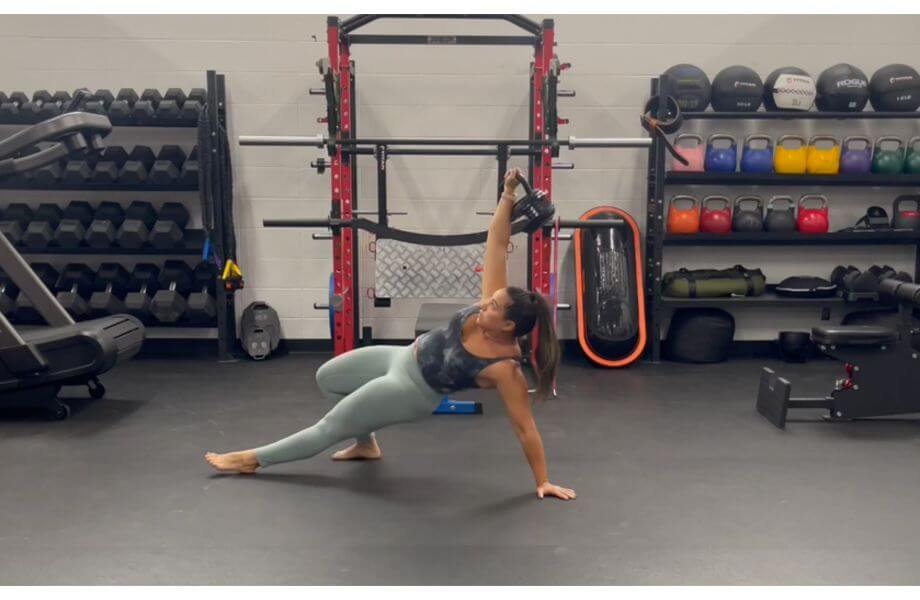
There are many moving parts to performing kettlebell flow workouts; patience in learning and performing them is vital. You have to walk before you can run. Here are a few more tips for mastering your flow.
Learn the Moves
You got to know kettlebell basics before attempting kettlebell flow in your home workouts. Learn your kettlebell moves. Before attempting kettlebell flow, ensure you know how to perform each movement. Going through the movements with bodyweight works well.
Find Your Flow
For example, when moving from a swing to a snatch to an overhead squat, you may struggle with the kettlebell banging into your forearm during the snatch. Better to work on your snatch and do a swing to clean to offset squat until you feel comfortable with the snatch.
Practice Makes Perfect
Remember the first time you tried something hard and sucked at it? It happens to all of us, and the only way to improve is to keep doing the thing. The same goes for kettlebell flows; the more you do it, the better you will get.
Use the Right Weight
Always select a lighter weight than you’ll need because when performing a kettlebell, flow takes coordination and intentional thought, and both take energy away from your lift. Plus, there will be a move within the flow, which will require less weight than the rest. And this is the weight to select when doing it. If you own an adjustable kettlebell, you can easily move up in weight as you get stronger and become more comfortable with the movements.
Kettlebell Flow: Final Thoughts
Kettlebell training is fantastic; the further you train with them, you must challenge yourself to keep progressing. An excellent way to progress is by performing two or more kettlebell moves together in one movement. Performing kettlebell flows will improve your:
- Conditioning
- Coordination
- Grip strength
- Full body strength
When you learn to go with the kettlebell flow, you never look at traditional cardio the same way again.
Kettlebell Flow: Q&A
What is a kettlebell flow?
A kettlebell flow is a form of strength training that performs two or more exercises together in one seamless movement. An excellent example of a kettlebell flow is a single arm swing to a clean to an overhead press.
Are kettlebell flows good?
Once you have the basics of swing, clean, snatch, squat, and press, kettlebell flows are a great way to build strength and challenge your body in new and novel ways. You can use them in HIIT workouts, cardio training, CrossFit-style metcons, and more.
What is the benefit of kettlebell flow?
Performing kettlebell flows has several benefits, but it is to be nailed to one benefit: improving your cardiovascular conditioning. Putting your body under load for a time is a fantastic way to enhance your physical capacity. When you want to take your conditioning to the next level, flows are a great way to get there.
What is the difference between kettlebell flow and complex?
A kettlebell flow is a sequence of exercises that usually flows well between exercises and can be repeated several times, for example, three swings, three goblet squats, and three reverse lunges on each leg. A kettlebell complex usually involves more exercises and less fluid transitions between movements.


